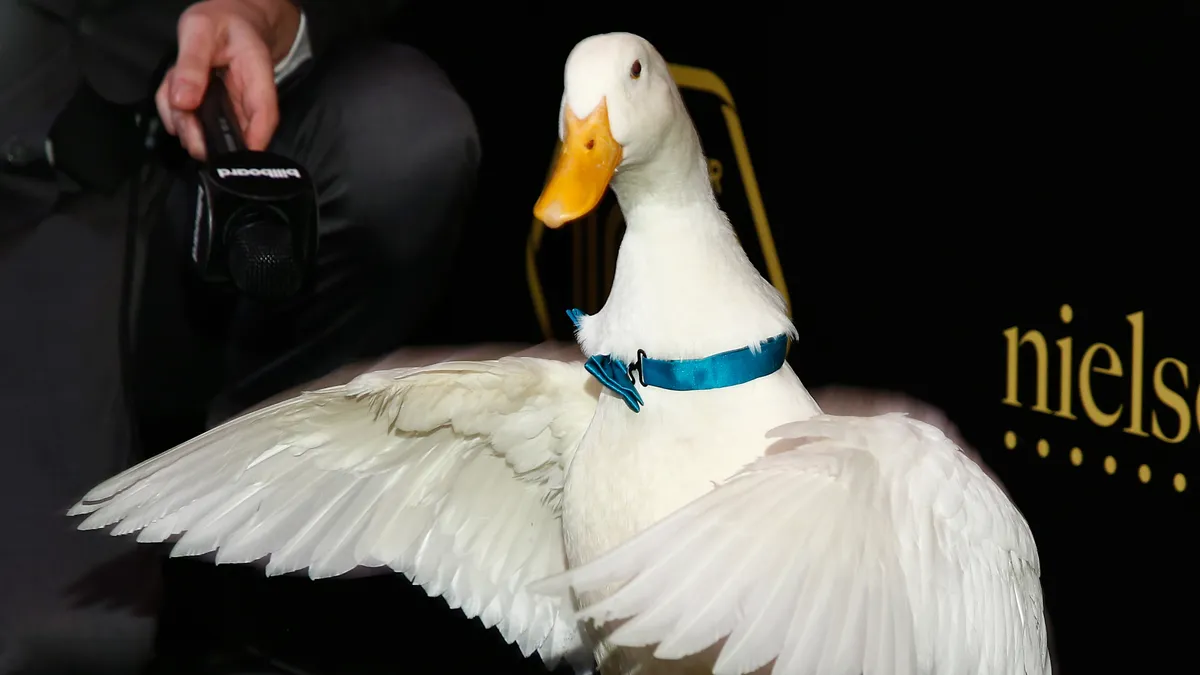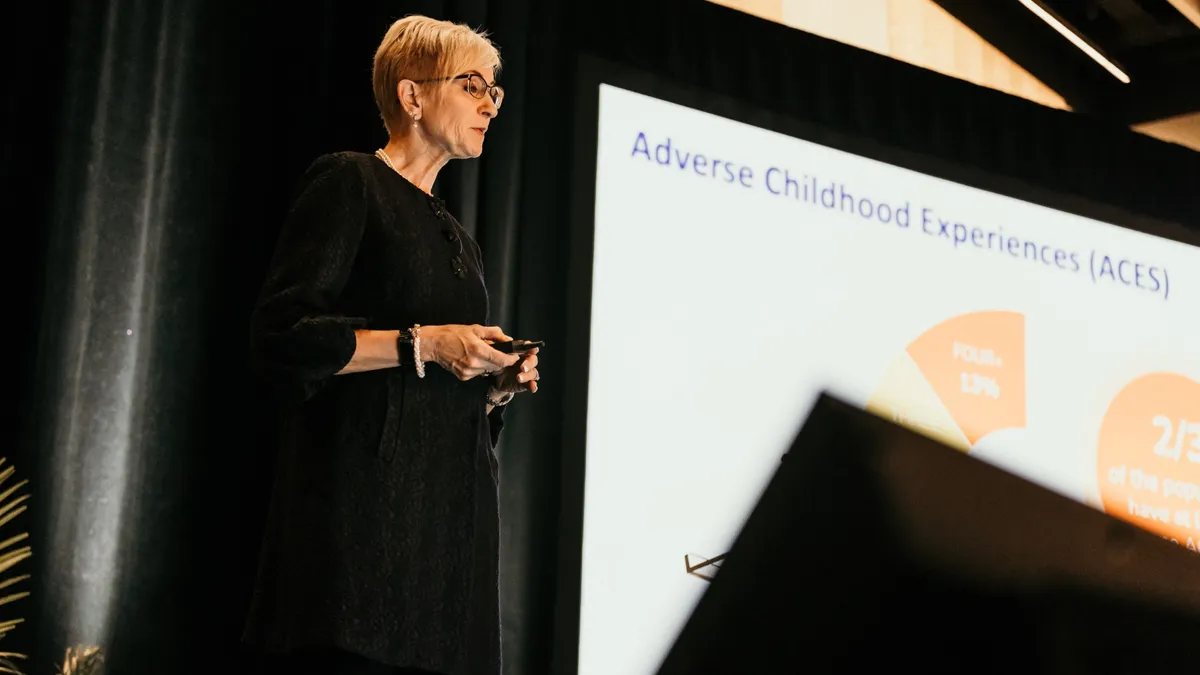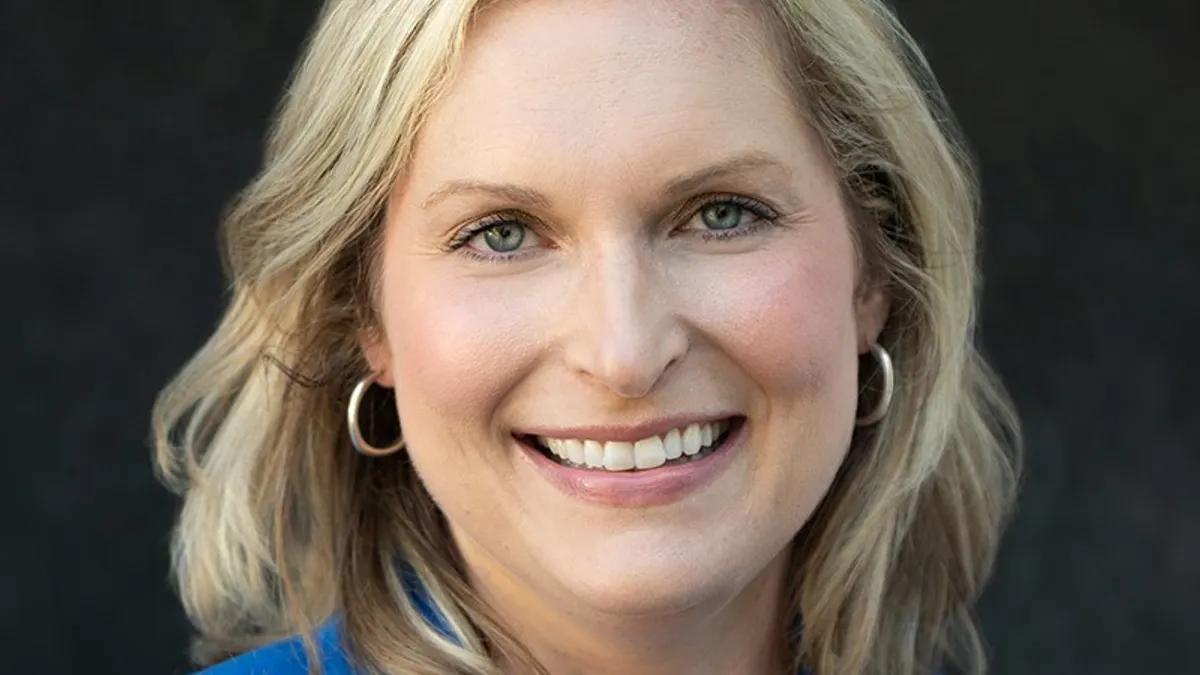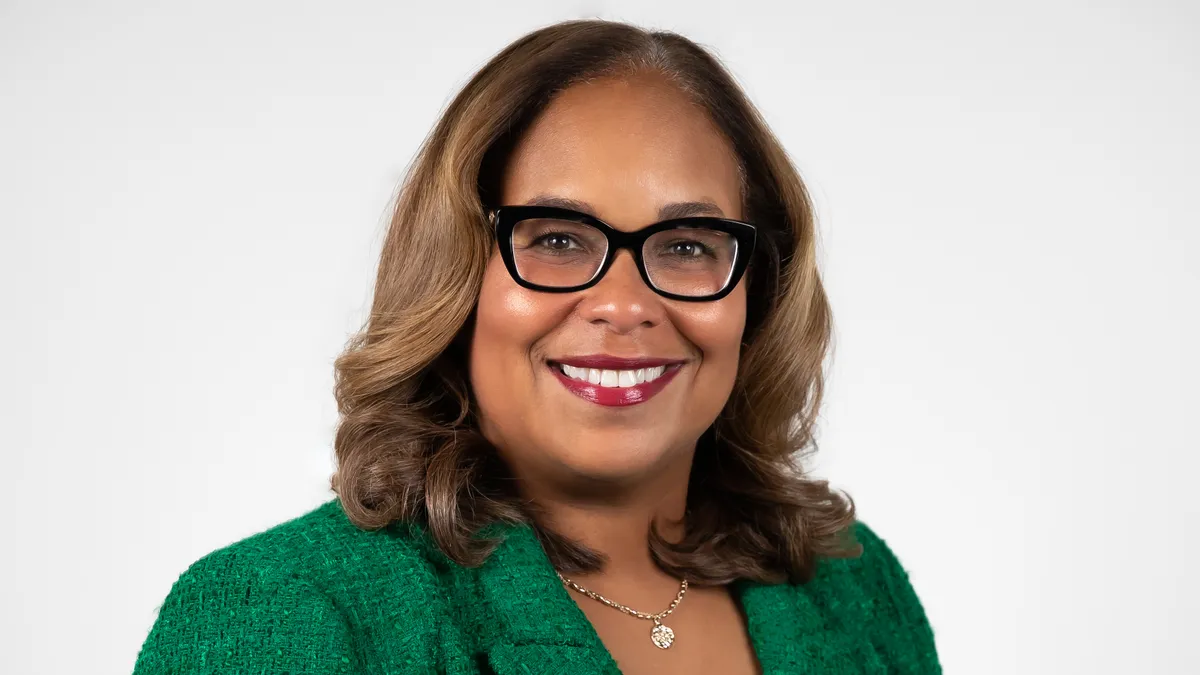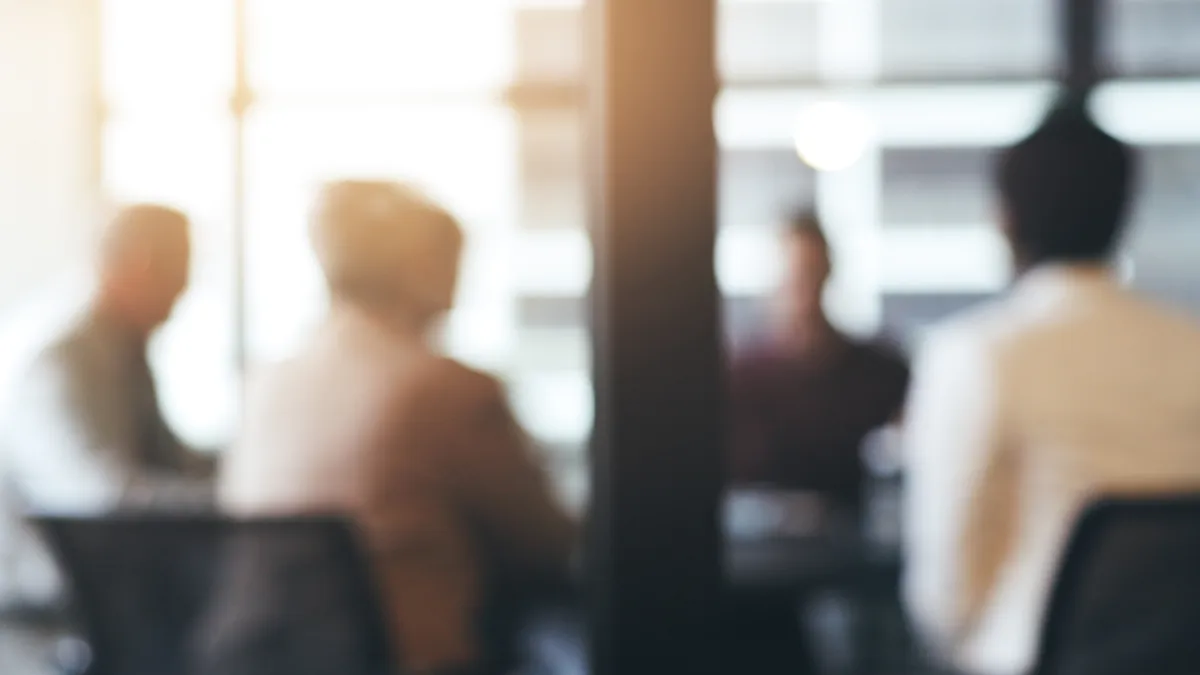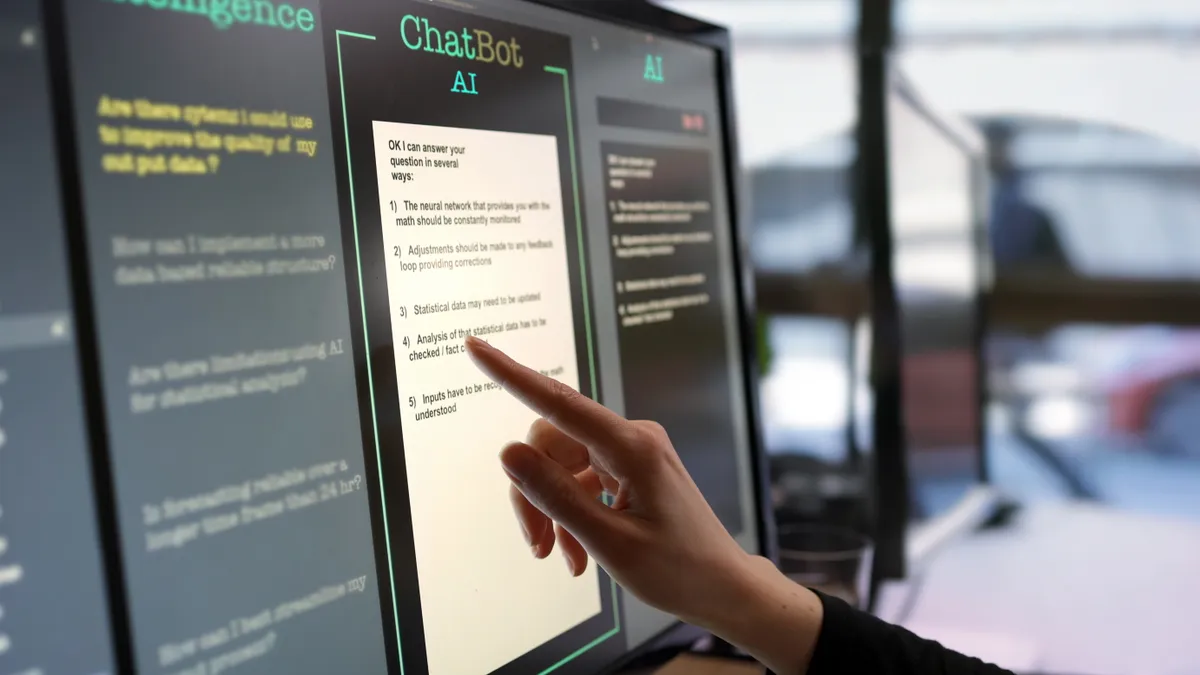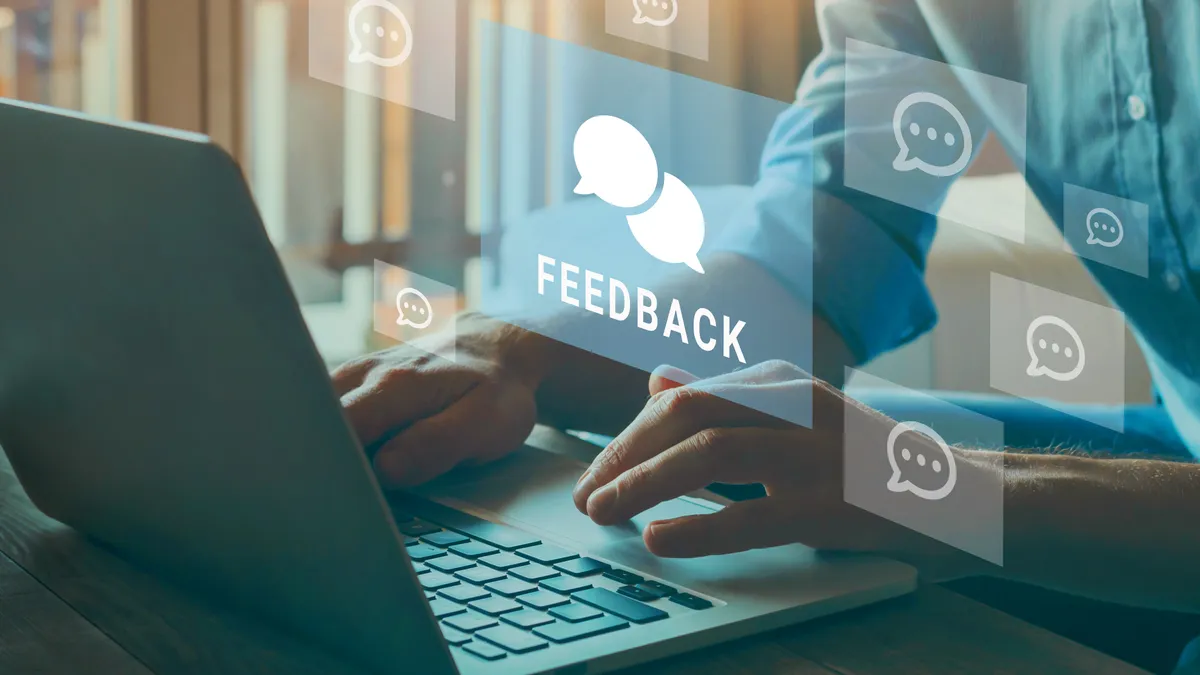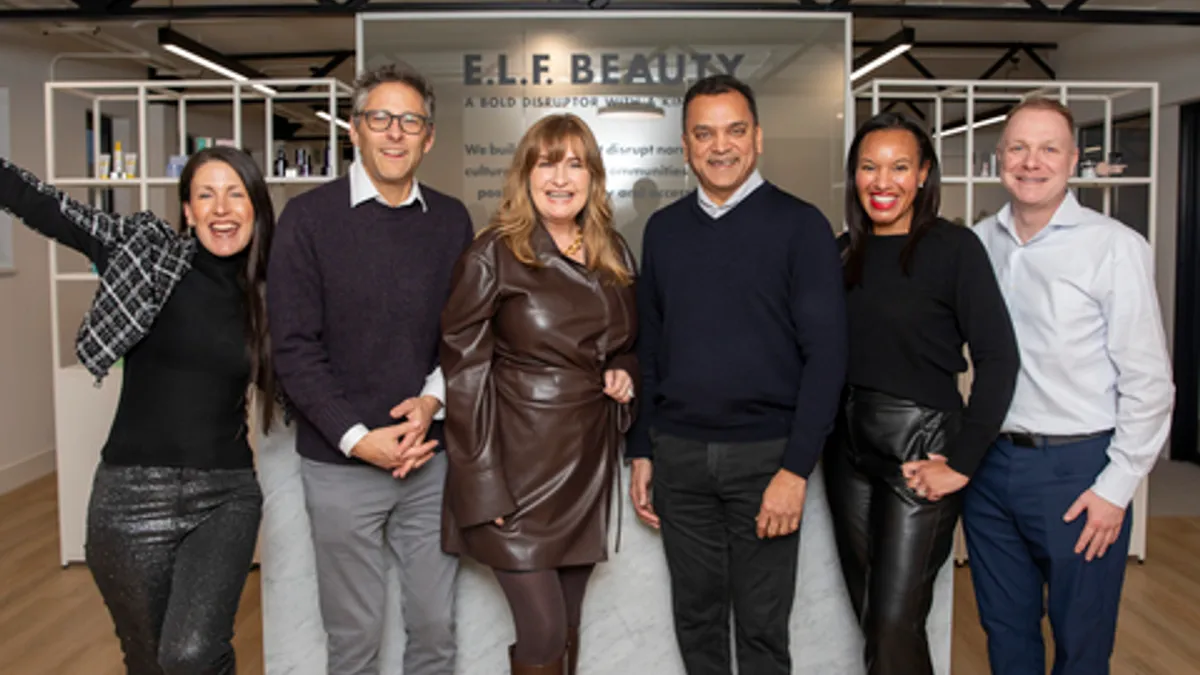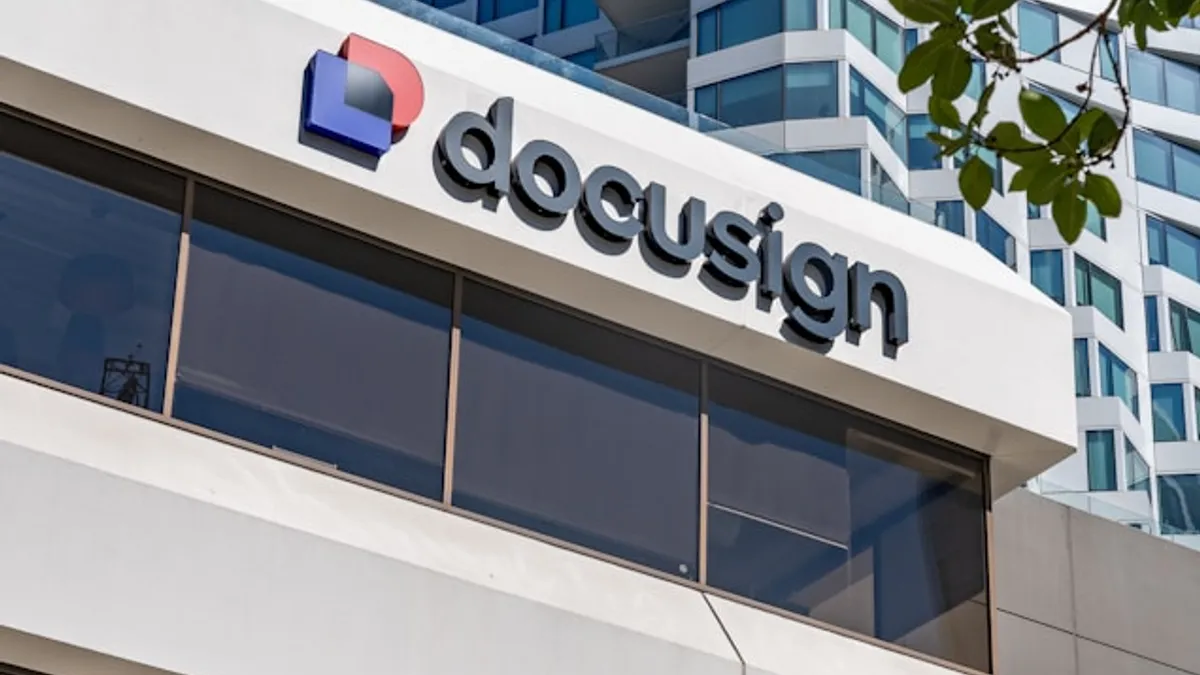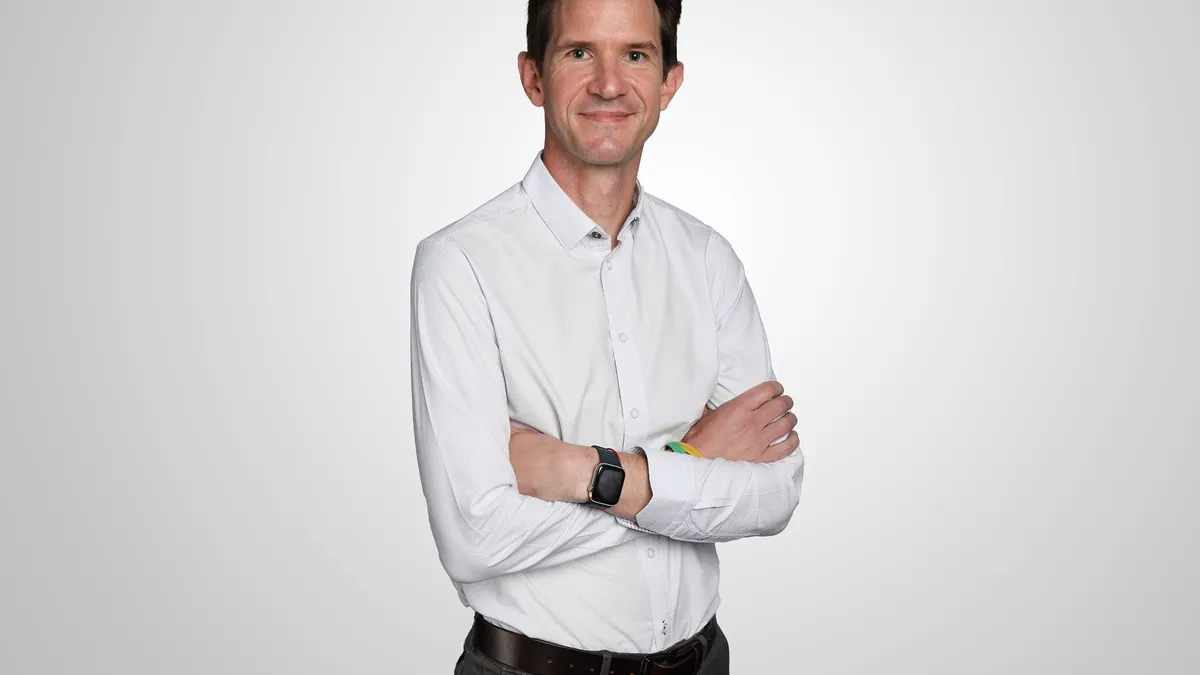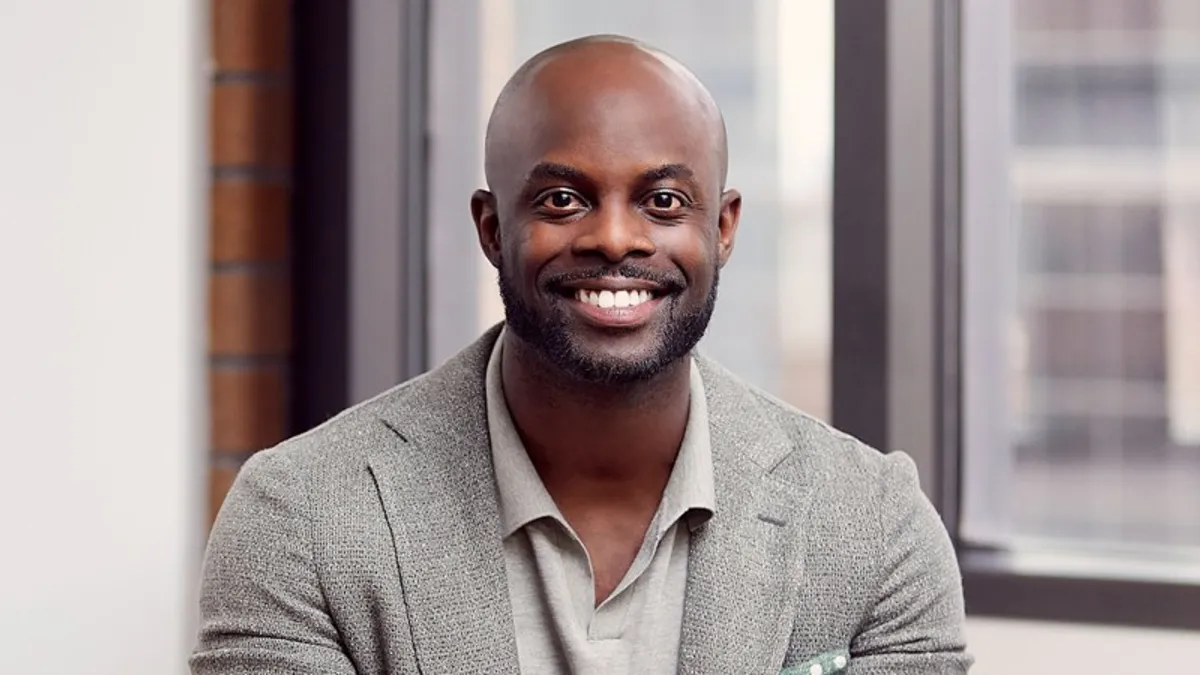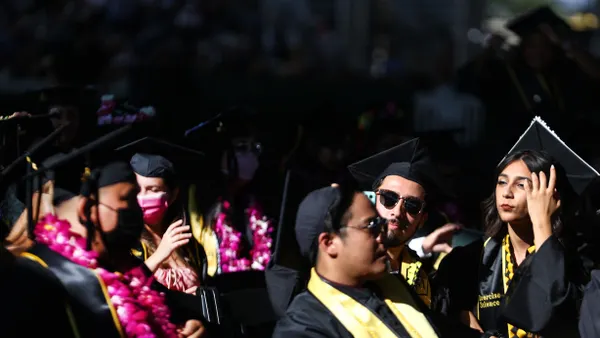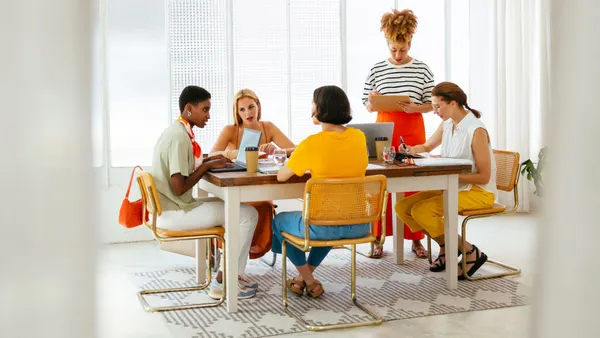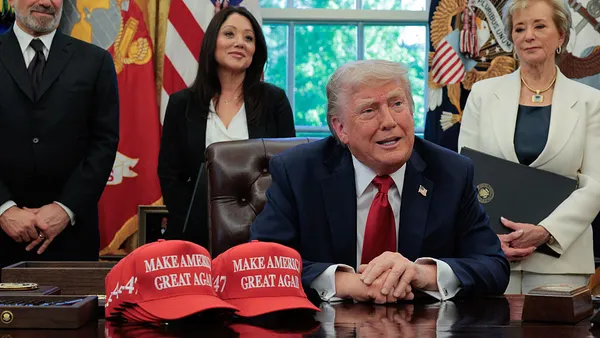Becky Cantieri, chief people officer at SurveyMonkey, an online survey and form provider, got her start in human resources while working at Nordstrom during college. Not only did she learn how to tie a tie, which has proved to be a pretty useful life skill, but she also learned the art of helping people make the most of their roles.
“I moved into a role where I was onboarding, hiring, onboarding and training new employees at Nordstrom,” Cantieri told HR Dive. “That's where it all really began. I fell in love in that role. I loved helping set people up for success as they were beginning their career with Nordstrom.”
Cantieri went on to hold human resources roles at Yahoo and SurveyMonkey before taking on her current title as chief people officer six years ago, a position where for the first time she “[runs] the function of HR in its totality.”
This conversation was edited for clarity and length.
HR DIVE: What is your leadership philosophy?
BECKY CANTIERI: We have three very important roles that we play. We illuminate the path: We take what is complex and make it simple and something that we can clearly communicate to the team about our mission, our vision, our strategy and where we're going.
Our second important role is energizing the team and helping the team translate that company strategy of what we're doing into what we are going to do every single day.
Then, we help lead and develop the team. We help them strengthen what they're great at. We help them learn and grow in areas that they need to be more successful in the roles that they’re doing. We help invest in them by recognizing them, stretching them into new things and showing them the path ahead. It’s all about clarity, growth and supporting employees in doing some of the best work of their lives inside your company.
What is one of the biggest challenges you face in your role?
Certainly in the last couple of years, the biggest challenge has been the changing dynamics of business. Many of us, especially those in tech, had been participating in an environment where we were rewarded for growth at all costs. That has pivoted to where we are expected to deliver profitable growth, which for many of us has really, really changed the dynamics of how our businesses are run.
That is one of the single biggest change management efforts I've ever participated in. It's about the clarity of strategy, the focus and our resources and how we deploy our resources. That's a pretty fundamental shift and a huge exercise in change management that just really requires that we work differently than we ever have before.
For some of us, that has meant company restructuring, downsizing and a very different approach to how we invest in perks and benefits.
There’s also the changing dynamic of work, period. We were at one point all in person, and now we're hybrid, remote and in person in some cases. There are many challenges within that, but I would say the grand challenge is the change management.
How do you manage layoffs as a leader?
Having to do a reduction in force is, at least for me and I imagine is for most, the worst thing that you have to do. I've always gone into it with the idea that how you treat people leaves a lasting legacy. It is equally as important when they leave your business as it is when they join your business.
We’ve always taken an approach of just being very, very thoughtful about the experience that we're trying to create for them. I know in these moments, depending on the size and scale, there can be a lot of difficult decisions that you have to make, but you can come at it from the perspective of, ‘If I were unfortunately impacted as part of this experience, how would I like to be treated as part of the process?’
We came up with a list of absolute nonnegotiables, such as we are not telling people via email. If it meant our team, the group of notifiers, had to get up at four o'clock in the morning and start communications early, then that's what we would do. We would give everybody the right to be told in person. We made sure everyone had clarity on what the next steps were, and we had lots of people available to help them with their transition. Then, of course, we provided the most generous support that we were possibly able to.
Treating those who are departing with dignity and respect garnered a lot of respect from those who are remaining, but we first took care of our departing colleagues, and then we moved on to those who are staying to communicate why we were in a position to have to reduce the size of the organization and what it meant.
We ensured that they understood that we treated people the best that we could, and then we focused on the future, what was next, what that meant for how we were going to operate our business and what the experience would be like for the rest of them.
I know that's hard to do at scale, depending on the size and scale, but you have to make deliberate decisions because we've seen how it can go really unfortunately in the wrong direction if you don't take the time to plan it in a way that really is as humane as possible in an exercise that feels really inhumane.
What do you see as the broader trends in HR?
Definitely two are just that general kind of restructuring and the focus on profitable growth. Also, the continued evolution of how we work and where we work, where offices come into play, how we embrace hybrid, how we think about productivity in a more distributed work environment.
There's also the whole space of tools, technology and AI that we're all studying and experimenting with. I am not a prognosticator on AI and technology, but we are absolutely dabbling in it and testing in certain areas to see where it can be helpful to us, without getting too far into the realm of creepy and weird. I believe that will definitely continue.
For us, one of the big areas that I think we're all thinking about is how do you rebuild and reimagine culture and the employee experience in this much more distributed work environment? We all used to rely on our great office spaces and having everybody together, company events and those kinds of things. In this hybrid and distributed work world, how do you recreate that magic and have that same connection and community that we once had in person?
I know that there's a way to do it. I know that we have not all figured it out yet. I know it does not mean calling everybody back into the office. It is just rethinking some of those traditions that we've had and the ways that we interact to make it possible across multiple mediums.
What does the company workforce look like?
We embrace a model that we refer to as choice. We give employees the option to choose a work mode that works for them. Overall, we are about 58% remote, and then the balance of the organization is in some form of hybrid or slightly more than hybrid utilization of our physical office hubs, which has changed radically since the beginning of the pandemic. We were about 3% remote before going into the pandemic. We have a little more than 1,100 employees.
What are some things you’ve done to build that culture?
A few things. One is a regular recurring cadence or structure to the way that we operate our business. For example, for the broad base of employees, we have a monthly town hall meeting, and then we have a quarterly all hands meeting. Those are both opportunities to do kind of broadcast communication to the team. We do everything from focus on our company priorities and how we're progressing against those to celebrating wins, starts, anniversaries and all the work that's going on across the team. That very consistent cadence of interaction with the team has worked well for us.
Then, we have functional team alignments. For example, I have my own team weekly meeting, weekly one-on-ones and monthly all hands meetings. We're really working to keep the teams aligned and focused on what the most important priorities are and then sprinkle in more of that kind of fun, community-building collaboration and opportunities to build more and stronger relationships across the team.
In addition, we’re using technology collaboration and tools like Zoom, of course. We do a lot more asynchronously as well. We’re doing things through Slack and email, working in Google Docs and that kind of thing more than we ever had before. We used to schedule meetings to get everything done. Now, we try to schedule meetings to get things kicked off and make sure everyone's well aligned, then use lots of asynchronous or other productivity tools to help us ensure we're keeping pace on delivering against our goals.
What does a typical weekend look like for you?
Well, I have two girls. I have a nine-year-old daughter and a 14-year-old daughter. They both play volleyball, so we usually have some volleyball, and the older one also cheers. We also have a dog. And we do not live near our families, so whenever we get the chance or have a long weekend, we'll go visit my family in San Diego and Arizona, and connect with my husband's family. We tend to go to a number of different places with them, but it's our opportunity to connect with friends and family, too.
What does self-care look like to you?
I wish I could say I was better at this than I am. But, for me, there are a couple of things that help me recharge my batteries when I do need to be recharged. That has certainly been the case over the last couple of years. I love to go for walks with Henry, our dog. For me, when I'm stuck or exhausted or something along those lines, just getting outside and going for a walk gives me a chance to get out from behind my desk, spend some time in the fresh air and get my heart rate up a little when the only thing I have to worry about is making sure I cross the street before I cross the street.








